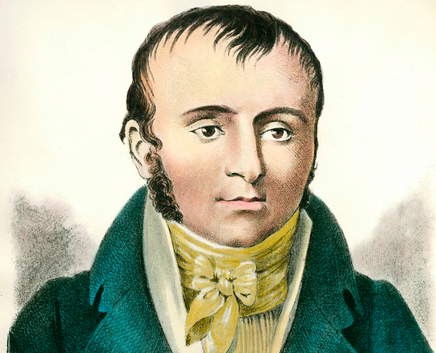Considered the founder of histology: Who is Xavier Bichat?
In the years when the microscope was not widely used, Bichat began to study the structure of organs, which he divided into fibers or decomposed in special solutions, mostly with the naked eye. As a result of these studies, he showed that organs are composed of different tissues and that one type of tissue can be found in more than one organ.

(1771-1802) French anatomy scholar. He is considered the founder of tissue science. Marie François Xavier Bichat was born on November 14, 1771, in Thoirette in the Jura Region, it is said that he received his first anatomy lessons from his father, who was a doctor. After Nantua College, he studied philosophy at a Jesuit school in Lyons. In 1791, he became a student of surgeon and anatomy scientist Marc-Antoine Petit in the same city. He went to Paris in 1793 and continued his medical education. He worked with him in the surgical clinic founded by Pierre Desault (1744-1795) at the Hotel Dieu (health and nursing home). He compiled and published the remaining chapters of the Journal de Chirurgie ("The Surgical Diary"), which Desault had left unfinished at his death in 1795. In 1797, he began teaching private pathology, physiology, and anatomy. After 1799 he became completely interested in anatomy. In 1801 he started working at the Hötel Dieu. He died on July 22, 1802, as a result of an accident in his laboratory.
Marie François Xavier Bichat (14 November 1771 – 22 July 1802) was a French anatomist and pathologist, known as the father of modern histology. Although he worked without a microscope, Bichat distinguished 21 types of elementary tissues from which the organs of the human body are composed. He was also "the first to propose that tissue is a central element in human anatomy, and he considered organs as collections of often disparate tissues, rather than as entities in themselves".
At the end of the 18th century, the microscope was not widely used and the animal cell had not yet been discovered. With the help of the microscope, which he did not trust much, Bichat began to study the structure of organs, which he had cut into fibers or decomposed in special solutions, mostly with the naked eye. As a result of these studies, he showed that organs are composed of different tissues and that one type of tissue can be found in more than one organ. He identified twenty-one different tissues with different vital characteristics and structures; Bichat was also the first to use the term “texture”. He explained these findings in his work titled Iraite des membranes ("The Study of Membranes") written in 1800. In Anatomie Generale ("General Anatomy"), which he prepared by working on approximately 600 autopsies in a year, he defended the view that general anatomy is the science of the structures that make up organs and that a new field of pathological anatomy should be developed from general anatomy.
At that time, the idea that the origin of diseases was not the whole body, but various organs was put forward by Morgagni. Bichat not only opposed the old view but developed a new theory of pathology by further developing Morgagni's thought. According to him, the cause of diseases may be the inability of that tissue to function as a result of disorders in one or more of the tissues with different vital functions, so each tissue could show different diseases. Thus, he also pioneered histology by drawing attention to the functions of the tissue. Bichat opposed the "reductionist" theses, which argued that the vital properties of tissues could be explained by physicochemical laws; Instead of the reductionist approach, he was closer to the physicians who advocated animism with Stahl's "vital essence" theory. The existence of the animal cell was discovered after Bichat's death, and vital functions began to be studied at the cellular level. However, as a result of Bichat's research, mostly with the naked eye, without a microscope, his discovery of the tissues that make up the organs and their different functions led to important developments in the field of histology as well as pathology and anatomy.
